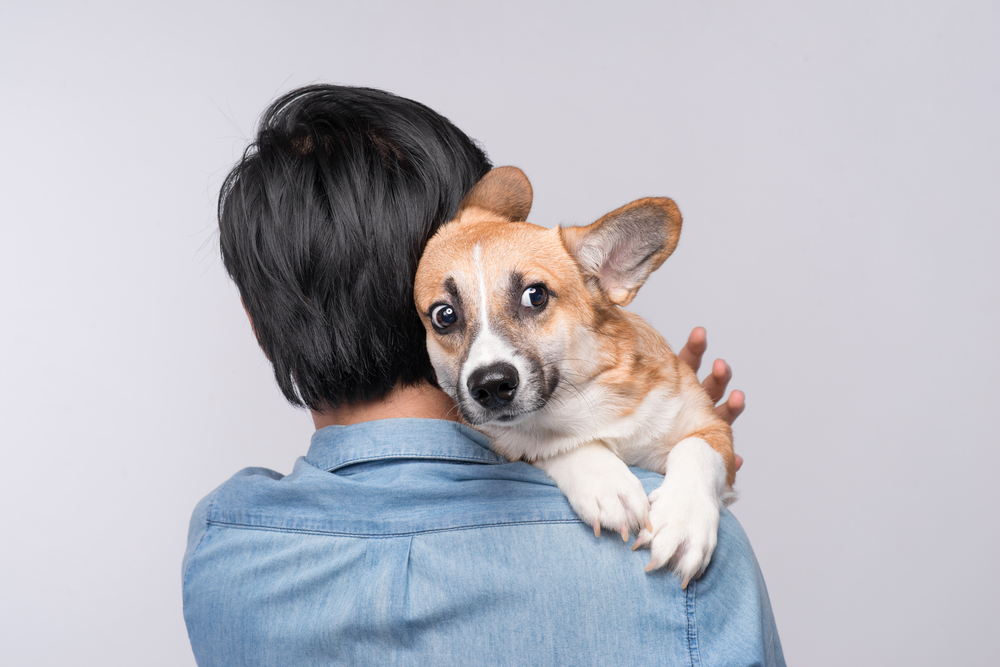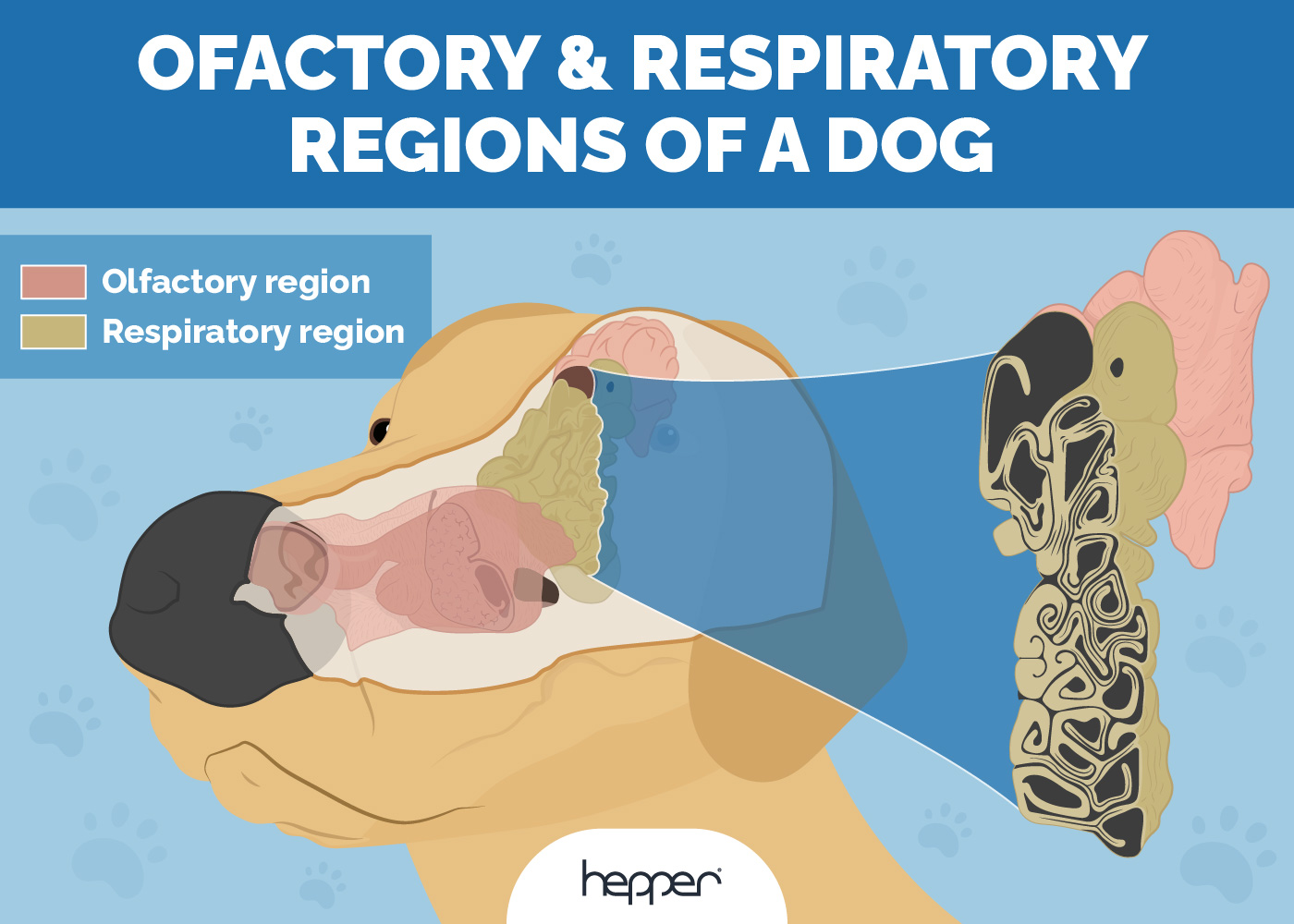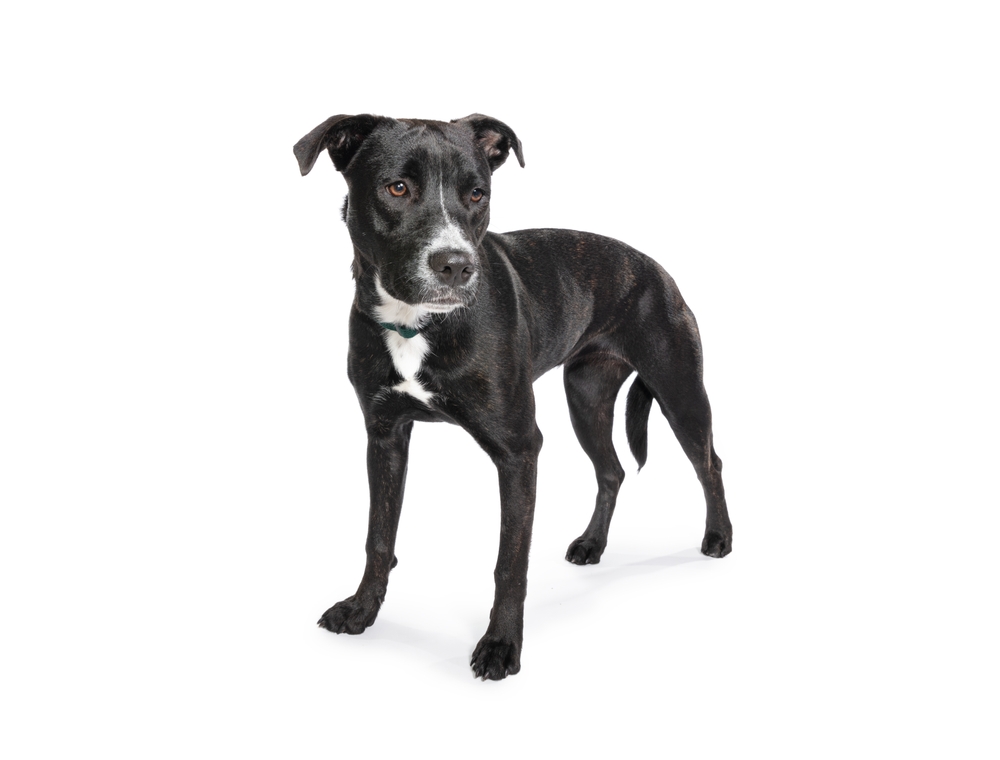If you’ve noticed that your dog becomes clingy and attentive to you when you’re afraid, you’re not imagining it. It’s the same “sixth sense” that causes dogs to behave differently around people who are afraid of them. We know that dogs have an amazing sense of smell, but can they actually smell fear?
The short answer is yes, there’s scientific evidence that dogs can smell fear. Keep reading to learn how this works!
Can Dogs Smell Fear? What the Science Says

There is, in fact, scientific evidence that proves that dogs can smell fear. Dogs have smell “superpowers” that give them the ability to detect human emotional states by their scent. You can’t hide your fear from dogs, and they know if you’re faking it!
A study published in 2017 suggests that dogs could smell human emotions and respond accordingly. When a human feels scared, they emit moisture from their sweat glands. Sweat contains a variety of different chemosignals that dogs can smell.
What Emotions Can Dogs Smell?

Dogs respond differently to humans in different emotional states, primarily fear and happiness. Dogs that are exposed to “happy smells” have lower heart rates and higher levels of interaction.
When dogs are exposed to a fearful human, they exhibit stress behaviors like higher heart rates and freeze responses. They also seek more reassurance from their owners than dogs that are exposed to happy odors.
Researchers believe that the emotional states that we emit to our dogs directly communicate across species. So, if we’re scared, our dogs become scared too.
How Powerful Is a Dog’s Nose?
Dogs can have as many as 300 million olfactory receptors in their noses, compared to only about 6 million found in a human nose. On top of this, the portion of a dog’s brain devoted to smell is 40 times greater than ours.
Dogs can smell substances at a concentration of one part per trillion, the equivalent of one drop of liquid in an Olympic-sized swimming pool. With the right training, dogs are capable of sniffing out bombs and drugs, tracking missing people, finding dead bodies, and even detecting disease. Cancer, diabetes, tuberculosis, and malaria are all able to be sniffed out by dogs, even without the human exhibiting symptoms.

How Your Dog’s Senses Can Help You Manage Your Emotions
Dogs are fantastic at helping us recognize our emotional states. Chronic anxiety, for example, can lead to walking around in a constant “fight or flight” state. It creates an over-activated nervous system, increased heart and respiratory rates, and an overall state of stress in the body.
The fact that dogs are so in tune with this can help us recognize the onset of strong emotional states and cue us to work through our feelings. This awareness can also help our dogs. Since they feed off our emotions, changing our mindset during intense situations (like vet visits) can help our dogs feel more relaxed.
Maintaining mental health is important for both humans and dogs, and the two may be more connected than we think.
Conclusion
As it turns out, the expression that animals can smell our fear is true—at least for dogs. Scientific evidence proves that dogs can smell the sweat that we emit when we’re afraid, thanks to their powerful noses. But fear isn’t the only emotion that dogs can detect. They can also tell when we’re happy.
The bottom line is that if you think your dog becomes more clingy when you’re afraid, you aren’t just imagining it!
Featured Image Credit: Aleksey Boyko, Shutterstock















